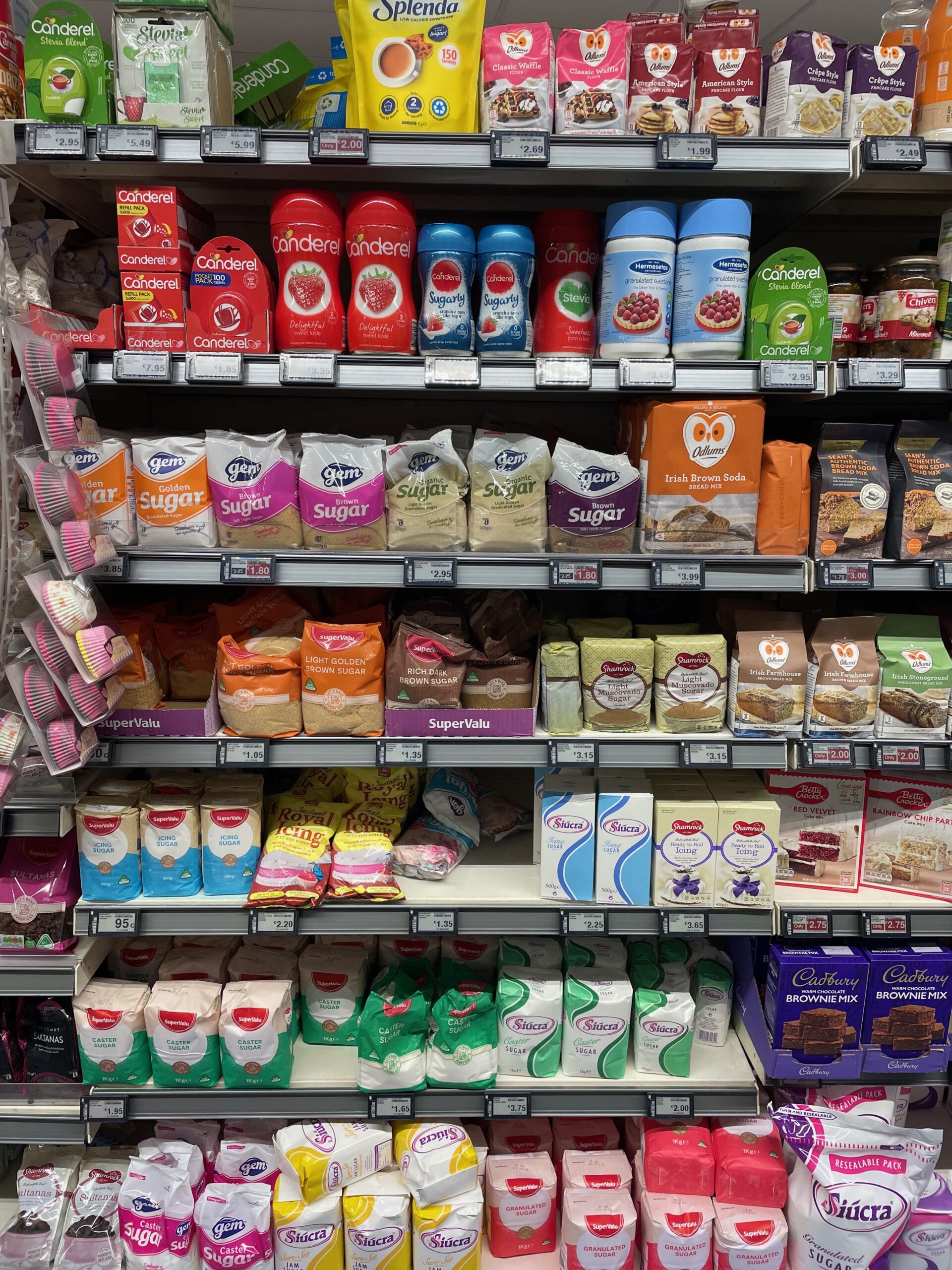As a trip to the baking isle in a supermarket will confirm, there are many different kinds of sugar in the world. They include granulated sugar, caster sugar, icing sugar, brown sugar, demerara sugar, Muscovado sugar, and molasses. These vary in terms of chemical composition and grain size, and they all have different uses.
Chemically speaking, there are several different types of sugar as well. Generally, the sugars we encounter in food are in one of two categories: monosaccharides and disaccharides. On a molecular level, a disaccharide is formed by joining two monosaccharides together.
To vastly oversimplify, all the sugars in our diet are ultimately converted into glucose, which circulates in our bloodstream so our body can use it. Take table sugar for example. It is sucrose, a disaccharide. Our bodies break it down into two monosaccharides: glucose and fructose. Our livers then convert the fructose into more glucose.
We can also categorise sugars as reducing sugars or non-reducing sugars. The details aren’t important, but the important thing to know is that reducing sugars react with tests like Benedict’s reagent while non-reducing sugars do not.
This is all summarised in the table below.
| Sugar | Type | Reducing sugar | Notes |
|---|---|---|---|
| Fructose | Monosaccharide | Yes | Mostly converted into glucose in the liver. |
| Galactose | Monosaccharide | Yes | Mostly converted into glucose in the liver. |
| Glucose | Monosaccharide | Yes | |
| Lactose | Disaccharide | Yes | Broken down into glucose and galactose. |
| Maltose | Disaccharide | Yes | Broken down into glucose. |
| Sucrose | Disaccharide | No | Broken down into glucose and fructose. |
Testing for sugar
There are two main ways that sugar can be added to processed foods and drinks during manufacture: either sucrose – table sugar – is added, or high-fructose corn syrup is added. In North America, high-fructose corn syrup is the usual source of sugar, and in the rest of the world it is sucrose. This means that sugary drinks, such as Coke, contain reducing sugar in North America, but the non-American versions do not.
Why does this matter?
This matters because there are trivial tests for detecting reducing sugars, such as using Benedict’s reagent, which changes colour in the presence of a reducing sugar. Reactions like this are used in the urine dip strips that test for the presence of glucose, a reducing sugar, in urine. Similar dip strips can be used to test for the presence of fructose in soft drinks. In North America, if you have an unknown drink in front of you, you can test to see if it has sugar with a simple dip test. There is a product, DietDetector, that does this.
You can’t use the same test outside North America, because the sugar used outside North America is different. DietDetector’s website says:
NOTICE: DietDetector Test Strips are designed to detect non-diet carbonated soft drinks to prevent accidental consumption. In the United States, beverage companies use high-fructose corn syrup to sweeten non-diet carbonated beverages. DietDetector Test Strips are formulated to detect the high-fructose corn syrup and to be able to provide a rapid result to determine the presence of a non-diet carbonated soft drink. Although the strips may provide accurate results on other beverages, we do not recommend relying on the results on drinks that are not carbonated soft drinks, drinks made with table sugar or for use outside of the United States.
There are ways of testing for sucrose, but they tend to involve converting sucrose to glucose. That is difficult to do outside of a lab.
So there are different types of sugar, they all become glucose in the bloodstream, but sucrose cannot be detected easily. So be careful out there!
Further reading
Normally, I don’t like recommending Wikipedia links, but these Wikipedia articles on sugars are all quite good.

